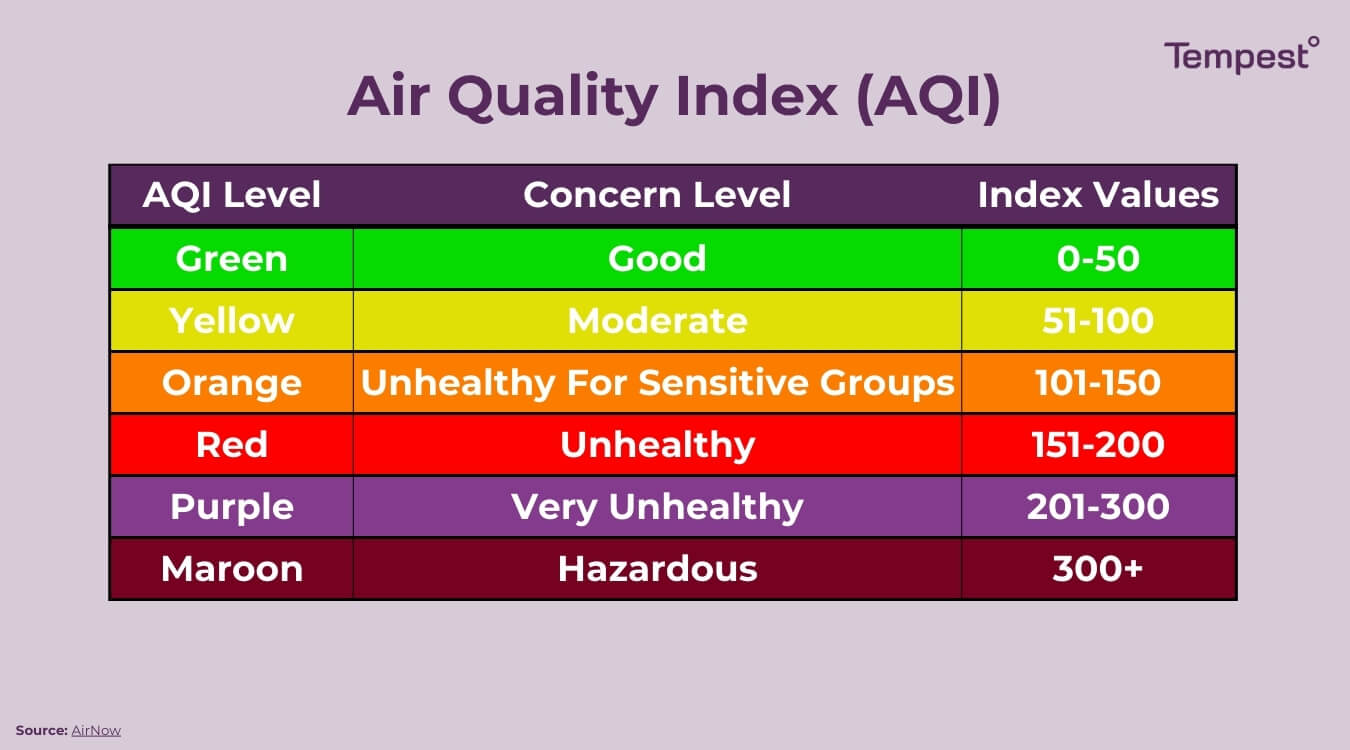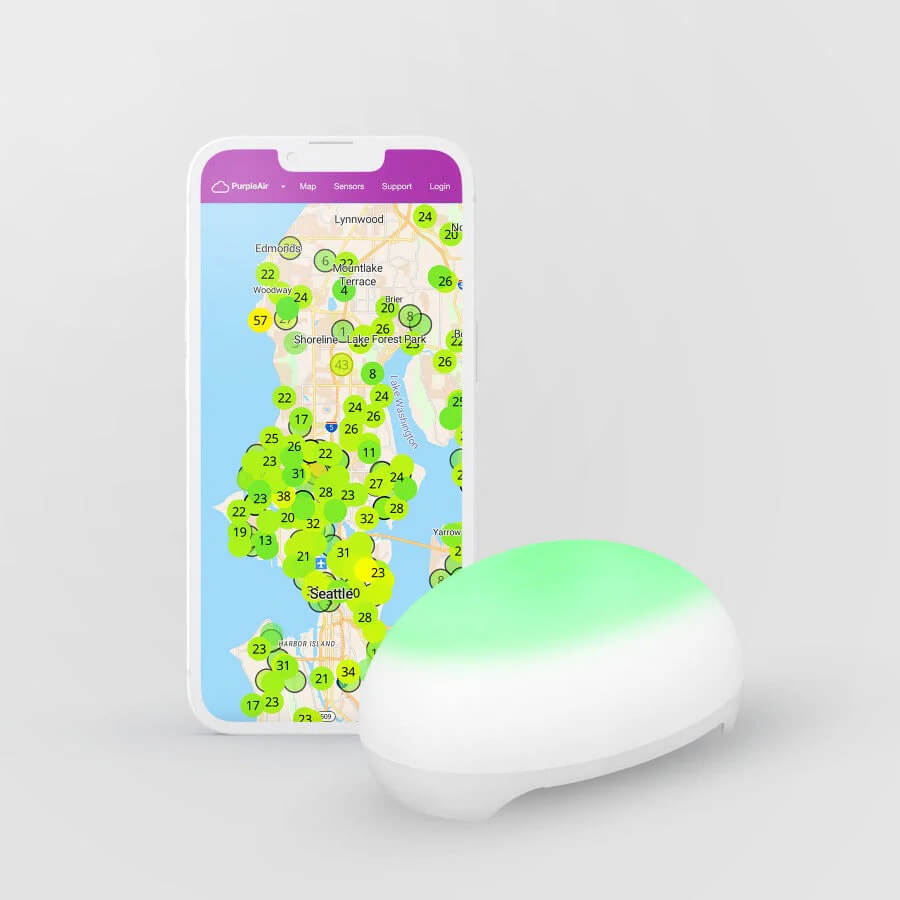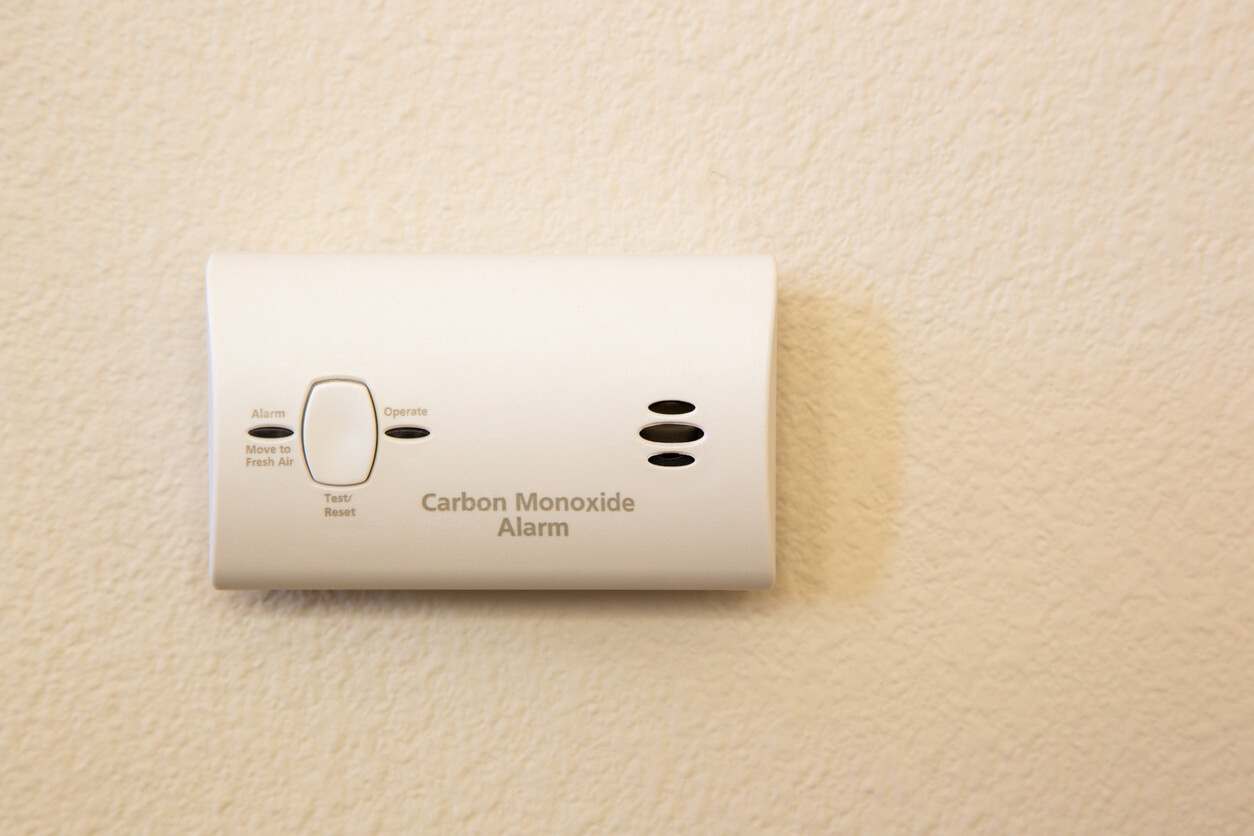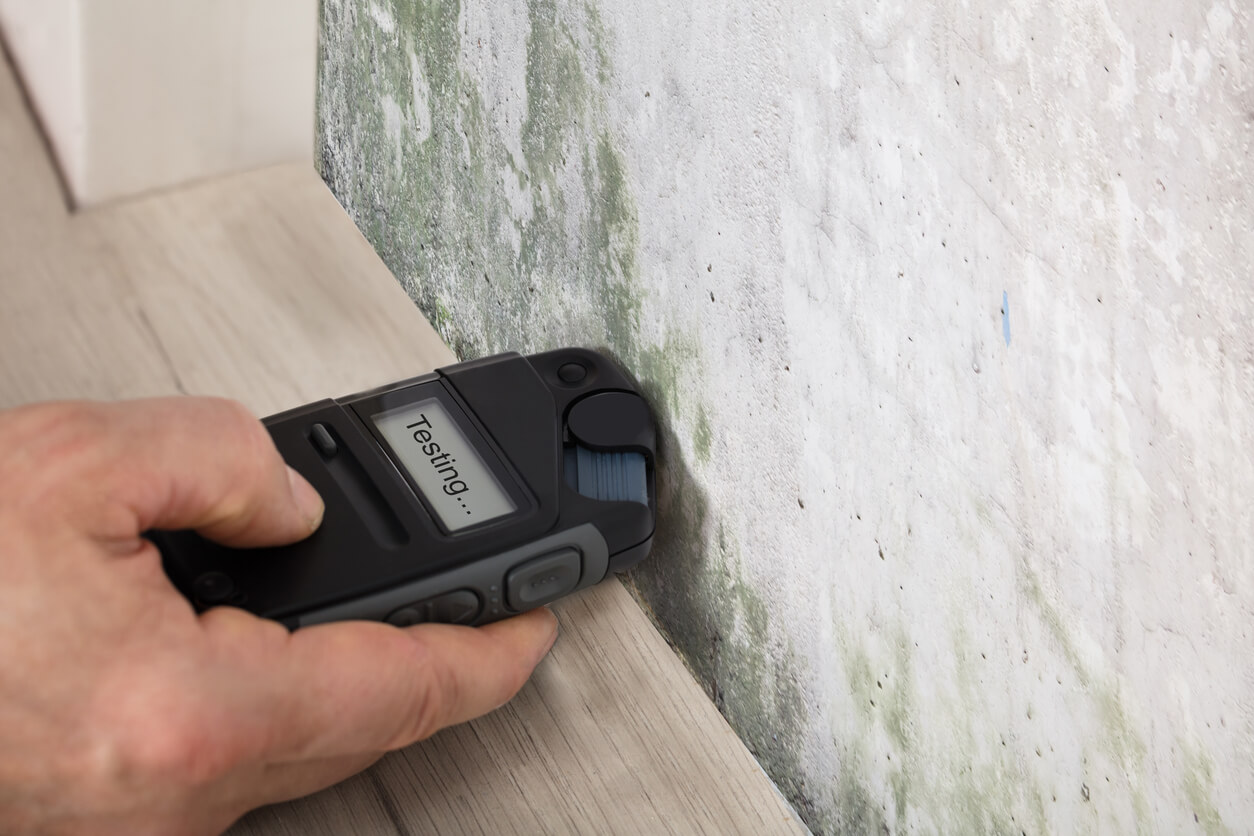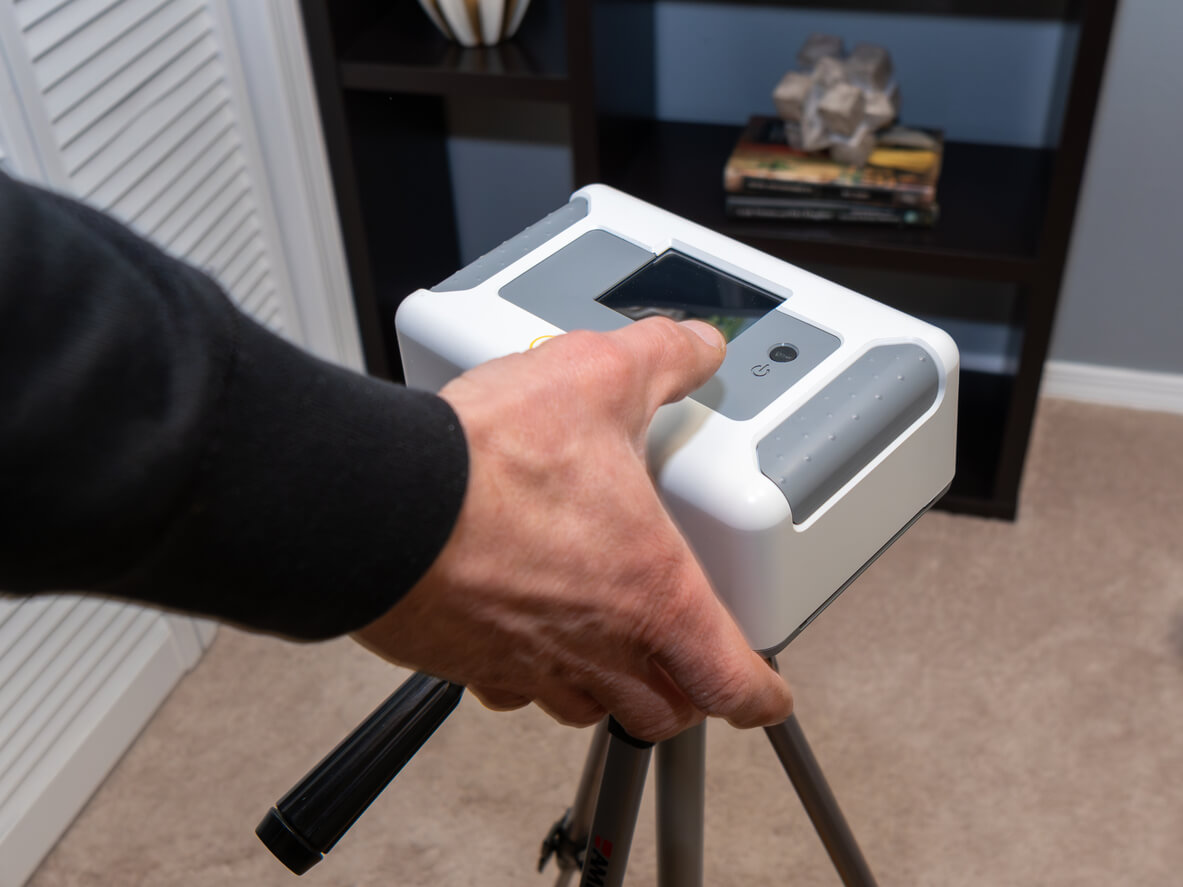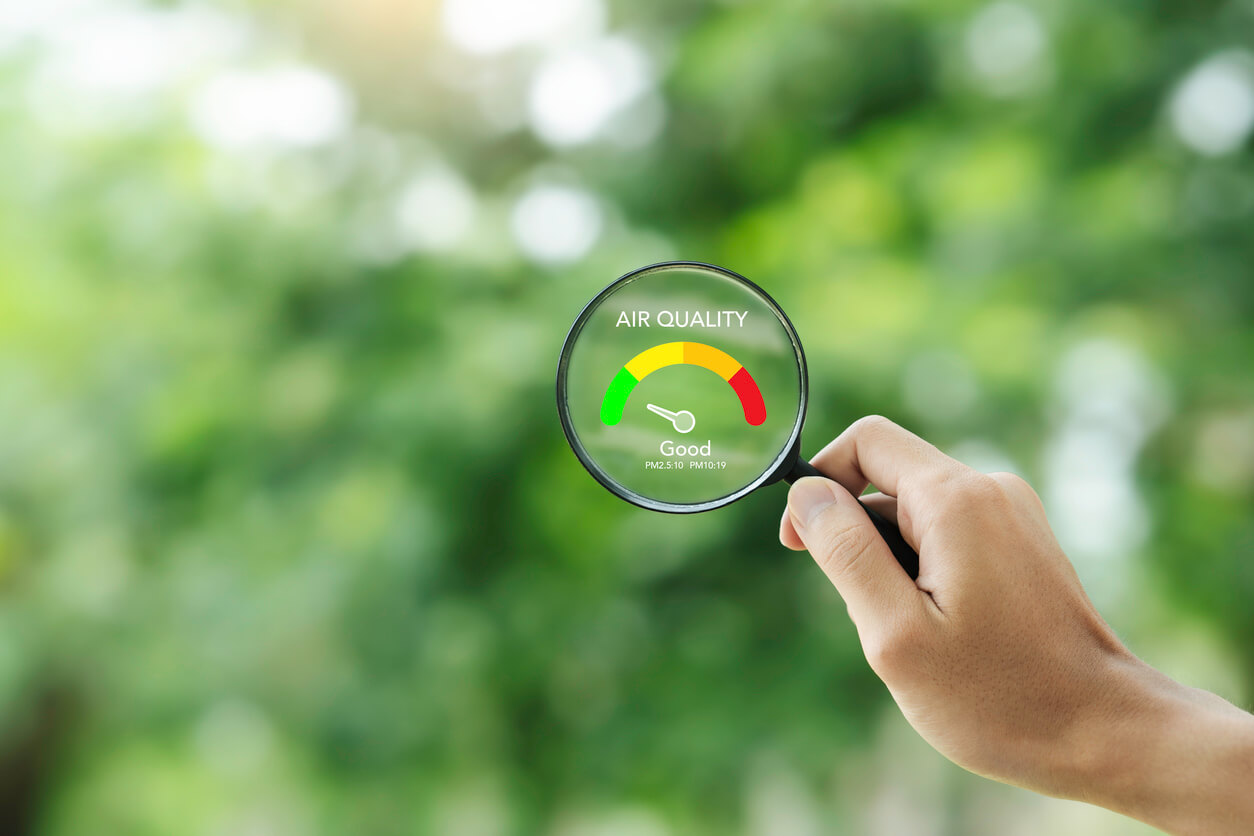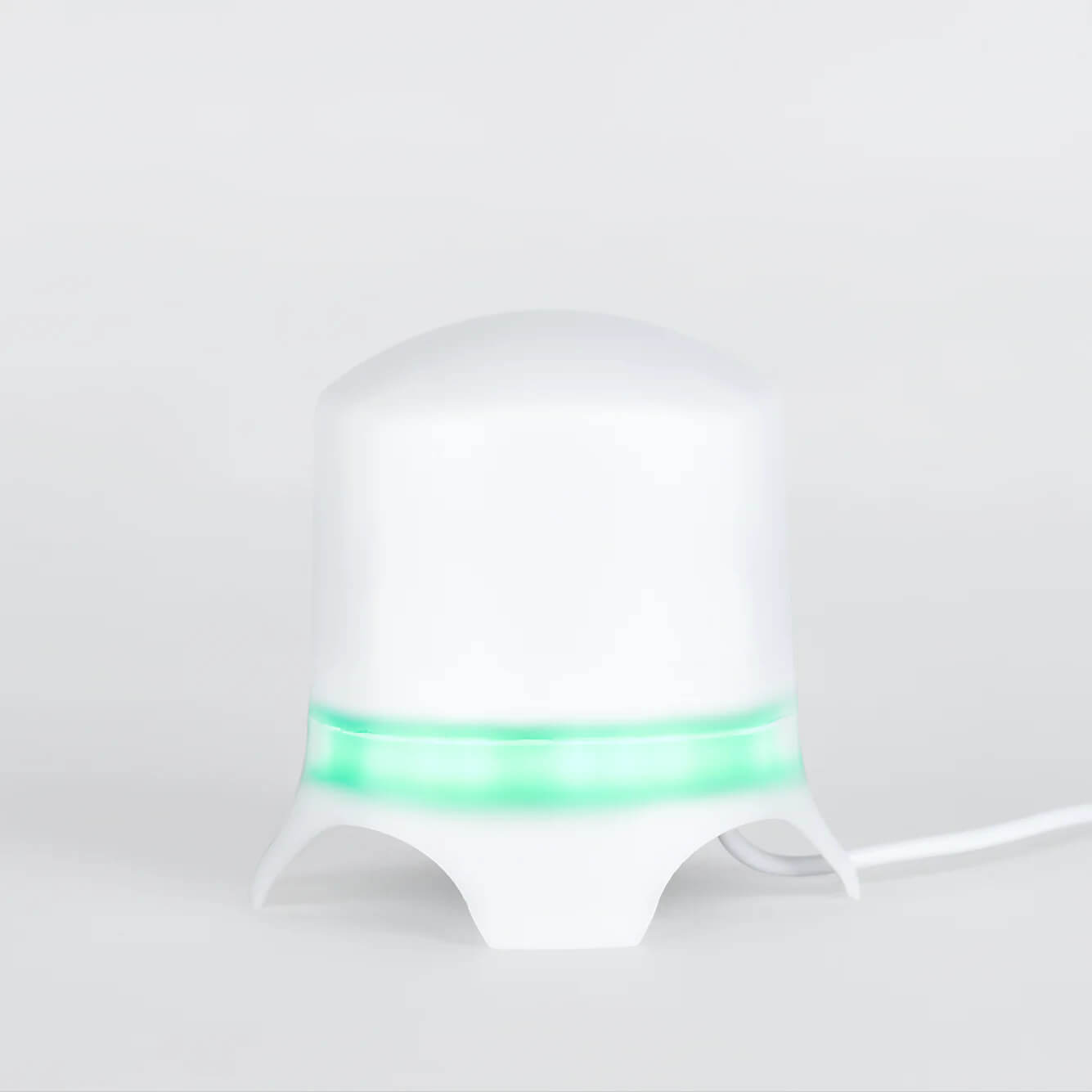
Concerned about possible allergens, mold, and unpleasant odors in your house? Learning how to test the quality of air in your home might be easier than you think.
Even if you clean regularly, you may be unaware of the dust, allergens, and other particles that are lurking in your home, impacting the quality of air you’re breathing in. So, how can you check the air quality in your house and make sure it’s at a healthy level for you and your family? Below, we’ll walk through some helpful tips for air quality testing inside and outside your home.
- Signs Of Bad Air Quality At Home
- How To Test Air Quality In Your Home
- How To Test Air Quality Outside Your House
- How To Improve Your Home Air Quality
Use the PurpleAir Zen Air Quality Monitor to track real-time home air quality at a glance.
Signs Of Bad Air Quality At Home
Even though most air pollutants are invisible to the naked eye, there are a few signs and symptoms that might point to poor air quality in your home. Here’s a quick overview of some of the most common indicators homeowners should be aware of.
Frequent Allergy Symptoms
Frequent allergy symptoms like sneezing, coughing, or watery eyes can be linked to poor indoor air quality. Allergens like dust mites, pet dander, and pollen can accumulate inside homes without you realizing it, triggering such reactions.
Increased Respiratory Issues
You may not know it, but pollutants like smoke, mold spores, and chemicals can contribute to worsening respiratory health problems. In other words, poor air quality could exacerbate symptoms for those in your home with respiratory health issues like asthma or bronchitis.
Visible Mold Or Excessive Dust Accumulation
Noticing visible mold growth or excessive dust buildup is a good indicator of poor air quality in the home. Long-term exposure to mold, in particular, can cause headaches, feelings of lethargy, and other allergy-like symptoms. Luckily, regular cleaning can keep dust levels manageable, and controlling humidity levels can help prevent mold growth.
Lingering Unpleasant Odors
Aside from the visual cues that there are potential air quality issues in your home, persistent or unpleasant odors could also be a clue. This might be a sign of poor ventilation or the presence of harmful contaminants in the air. It’s important to identify the source of any strange odors to help mitigate their impact on home air quality. Some common culprits include volatile organic compounds (VOCs) from cleaning products, gas leaks, old building materials, and clogged drains or plumbing issues.
Shop the Tempest Home Weather System for a guaranteed better local forecast.
How To Test Air Quality In Your Home
Noticing that you may have air quality issues in your home using the above indicators can be helpful. However, regular indoor air quality testing will make detecting and confirming harmful pollutants easier. Homeowners interested in learning how to check indoor air quality can consider using the following devices and tests.
Install An Air Quality Monitor
The first option is to install an air quality monitor to provide continuous data on pollutants in the home, like particulate matter, carbon dioxide, and VOCs. Devices like the PurpleAir Indoor Air Quality Monitor help homeowners monitor real-time changes in air quality, making it easier to take action when necessary. This is a very straightforward option and something that homeowners can install and monitor on their own.
Check out the many advantages of installing smart home technology like an air quality monitor.
Install Carbon Monoxide Detectors
It’s also a good idea to install carbon monoxide detectors in rooms with gas appliances. Carbon monoxide can enter your home through poorly ventilated or incorrectly installed appliances like stoves or furnaces. Exposure to this colorless, odorless gas can be fatal in the most severe cases and cause headaches or disorientation in more mild instances. So, installing carbon monoxide detectors is the best way to monitor for the presence of this toxic gas in your home, as you won’t be able to smell or see it.
Test For Mold
An important indoor air quality test is to check for mold. Again, prolonged mold exposure could cause serious health complications and impact your quality of life. Fortunately, homeowners can purchase at-home mold test kits to check levels around the home in just a few minutes. However, not all mold growth is visible or easily accessible, so it could be worth it to hire a professional for a more thorough inspection.
Test For Radon
Lastly, you may consider checking home air quality with a radon levels test. This is a naturally occurring yet dangerous gas that can seep into homes through the foundation. Medical experts now understand that radon is the leading cause of lung cancer in non-smokers. Thus, regular testing, especially in basements, is important to ensure your health and safety.
How To Test Air Quality Outside Your House
Outdoor pollutants from traffic or nearby industrial activity can affect the air quality around your home, potentially impacting your health and well-being. In addition to testing air quality in your home, you may also be interested in monitoring the air quality in your surrounding areas.
There are several resources available to assess outdoor air quality, such as government Air Quality Index (AQI) reports. Or, if you want more precise readings for your home’s location, you can use personal air quality sensors like the PurpleAir Zen Air Quality Monitor. This monitor allows you to check outdoor air quality with a quick glance, helping you determine if it’s safe to open your windows and engage in your favorite outdoor activities — or if it’s best to stay indoors until conditions improve.
Shop the Tempest Home Weather Station for precise forecasting and unlimited weather data where you’re located.
How To Improve Your Home Air Quality
After testing air quality in your home, you might be curious how to make improvements for lower health risks and better quality of life. The good news is there are several practical steps and simple solutions that homeowners can implement to improve air quality, which we’ll discuss in further detail below.
Increase Ventilation
One key way to improve air quality in your home is to increase ventilation. Stagnant air can cause pollutants to accumulate in the home, resulting in poor air quality and associated health risks. Thus, allowing fresh air to circulate in your home can help ensure proper ventilation and frequent removal of harmful contaminants. Some easy ways to accomplish this include opening windows regularly, using exhaust fans in the kitchen and bathrooms as intended, or installing a whole-house ventilation system.
Control Humidity Levels
Controlling humidity levels in the home can help prevent the growth of mold and mildew that produce harmful allergens and contaminants. This is particularly important in humid areas like bathrooms and basements, where using dehumidifiers or ensuring adequate ventilation are key to good air quality.
Check out these fun weather facts for kids to get your children interested in the world of meteorology.
Use Air Purifiers
Going one step further, consider using an air purifier to remove harmful particles from the air, such as dust, pet dander, and pollen. There’s a wide variety of air purifiers on the market. So, before purchasing, make sure to thoroughly research and consider your options to make sure you find the right one for your room size and specific air quality concerns.
Regularly Clean And Maintain HVAC Systems
A dirty or poorly maintained HVAC system could perpetuate poor air quality in your home. But, with regular cleaning and maintenance, the system could actually help improve air quality by filtering out pollutants and ensuring proper airflow. At the very least, replace air filters roughly once a season, clean out air ducts and vents every few years, and schedule routine HVAC inspections to ensure the system is working properly.
Always Know Your Home’s Air Quality With The PurpleAir Zen Air Quality Monitor
How do you test the air quality in your home? There are a few main tests that homeowners may want to complete to ensure their environment is healthy and safe.
But, for ongoing monitoring, a personal air quality sensor like the PurpleAir Air Quality Monitor can be a valuable tool. With just a quick glance, you can easily determine your home’s air quality, providing early detection of potential contaminants or pollutants that need to be addressed.
Shop the PurpleAir Touch Indoor Air Quality Monitor or the indoor/outdoor PurpleAir Zen Air Quality Monitor today for real-time tracking of the air quality in your home. And check out the Tempest Weather System, a personal weather station that gives you accurate local weather information.
